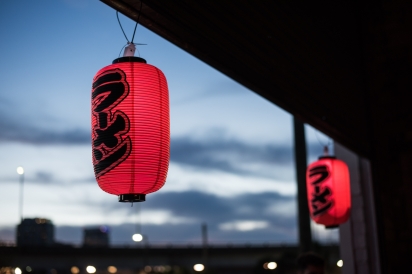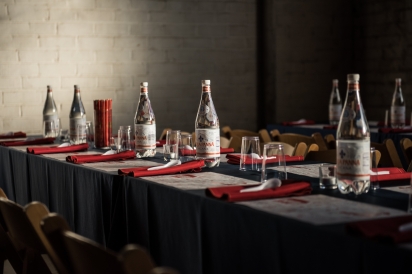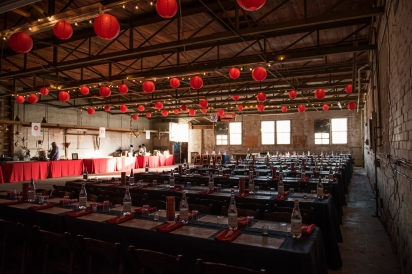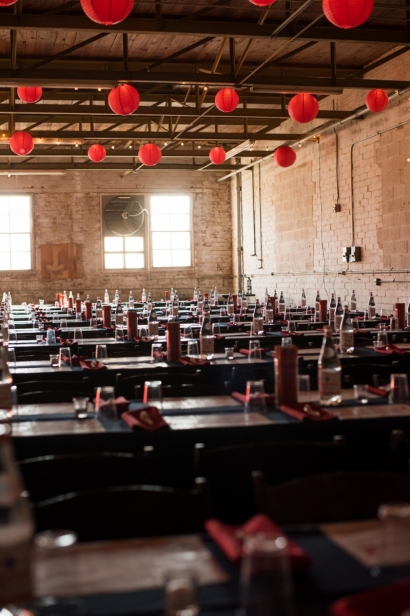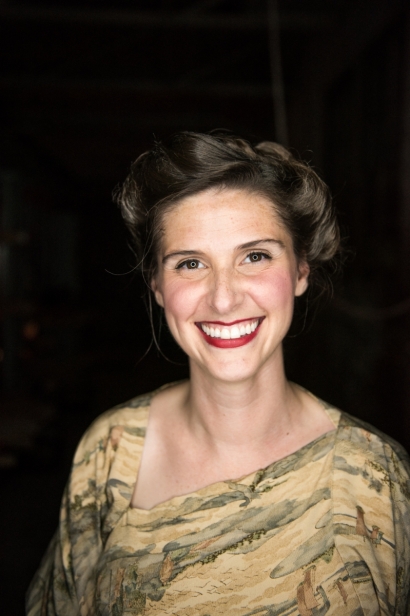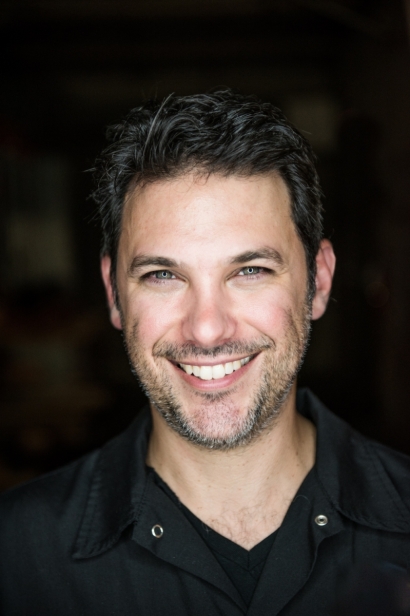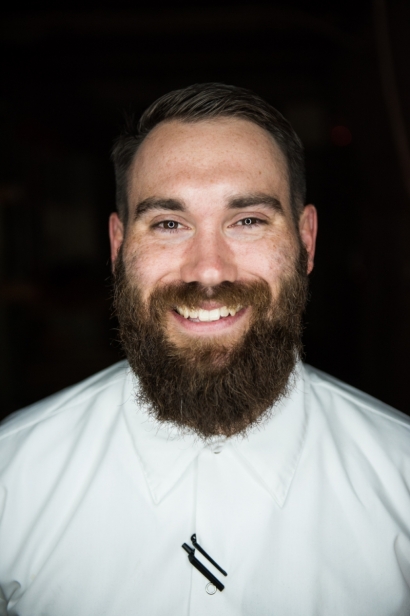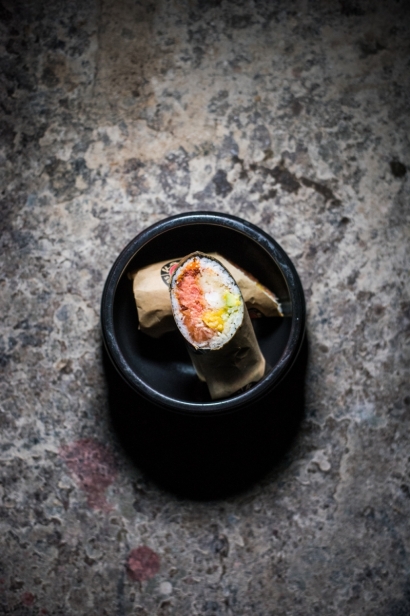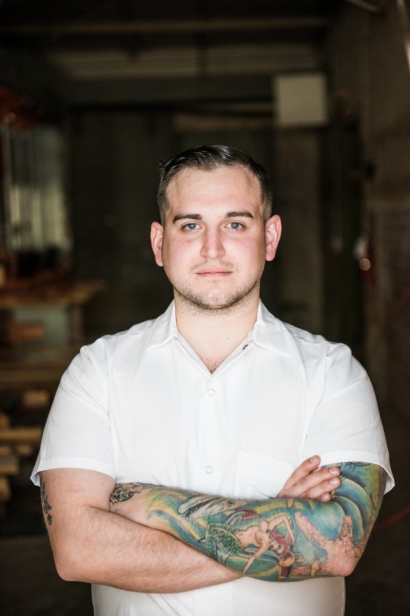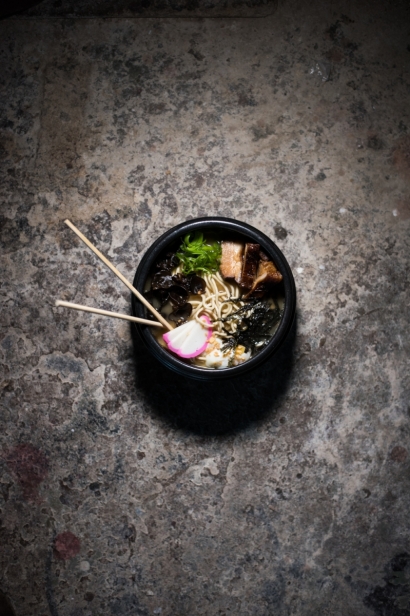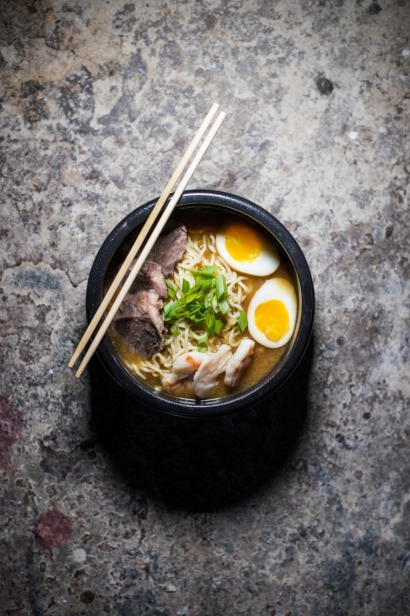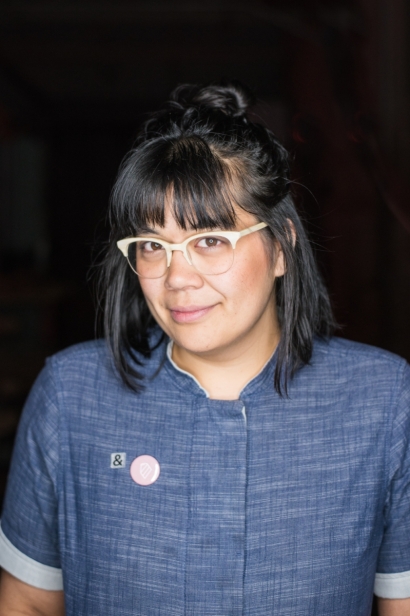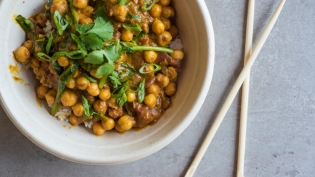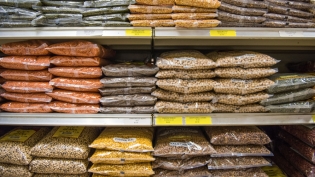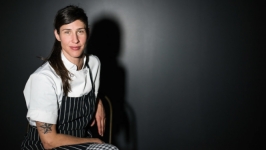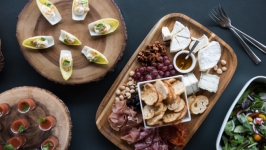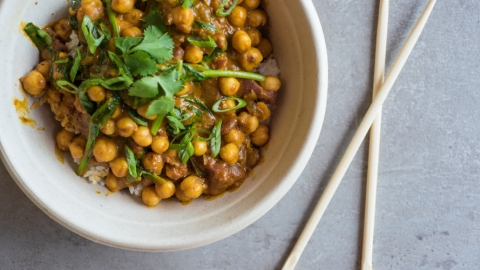What You Need to Know About Ramenfest
If your only exposure to ramen comes from that cheap block of crunchy noodles and boullion powder you used to eat in college, then Cari Sanchez Potter's most recent culinary production, Ramenfest, would have given your tastebuds a serious run for their money. Held at The Doro District in a setting straight from the Tokyo underground, eight of Northeast Florida's best chefs gathered to create their interpretation of a Japanese classic, while guests from around the region gladly slurped up the delicious results.
Traditional Ramen has four basic elements including broth, tare (miso or shoyu sauce), noodles and toppings. While noodles are, indeed, an important aspect of perfected ramen, the broth, tare and toppings are really what makes it shine. At Ramenfest, local chefs had an opportunity to showcase their unique use of Asian ingredients and experiment with techniques designed to enhance both flavor and experience. In the end, it was Chef Scotty Schwartz of Amelia Island's 29 South who took home the official 2016 Ramen Champion title, even having never made ramen before. Judges from the Jacksonville Japanese School cited Chef Schwartz's exceptional broth and perfectly prepared eggs as the reason for his win. Here's a breakdown of the competition:
CHEF SAM EFRON, TAVERNA SAN MARCO
Miso Ramen: Kimchi, Smoked Tofu, Nori, Mushrooms
Great ramen is all about great dashi, or broth -- and it's hard to perfect in a vegetarian form without seafood or meat to help develop that fatty, umami flavor that make us love this slurping dish so much. Luckily, fermented foods and mushrooms help build umami qualities and depth of flavor profiles. This is also where the magic of miso plays a critical role. Miso is a paste made by fermenting soybeans with salt and koji (a fungus or mold called Aspergillus oryzae). It's a traditional staple in Japanese cuisine with a wide range of uses, and along with soybeans, other ingredients such as barley, rice, millet and buckwheat can be used to provide different flavor profiles, resulting in that sought-after umami finish.
CHEF STEVE GRIMES, CRANE RAMEN
Cedar Key Clam Shio: Mayport Shrimp, Onsen Tamao, Roasted Pork Belly, Enoki Mushroom, Black Garlic Oil
Rather than utilize the pungent sharpness of fresh garlic, this ramen draws on the sweet and mellow flavors of black garlic. While not technically fermented, the black bulb is created by prolonged exposure to heat (about 60°) and humidity, transforming garlic into a source of roasted, caramelized flavors. Believed to have health benefits, it is rich in antioxidants and has long been used in Asian cuisine. A newcomer to the area, Crane Ramen from Gainesville is opening its first Jacksonville restaurant in the Five Points neighborhood.
CHEF RICK LAUGHLIN, SALT
Coconut Curry Ramen: Local Seafood, Crispy Duck, 63 Degree Egg, Shiitake Mushrooms, Black Garlic Salt
Chef Rick put a Southeast Asian twist on his ramen dish, with the addition of coconut and curry spices, plus topped his bowl with a 63° egg . A 63 degree egg is a culinary term for an egg that's been slow-cooked for one hour or more in a water bath at 63 degrees temperature until the egg becomes a gooey, fully-cooked yoke and pillowy white egg, and if you're an egg connoisseur, you would have appreciated the virtues of Chef Laughlin's efforts.
CHEF DONALD MAKOTO SINKICHI DEAN, RESTAURANT ORSAY
Okinawa: Rich Tonkatsu, Pork Belly, House Made Kamaboko, Pickled Ginger, Scallions
Chef Dean's ramen included a handful of Japanese ingredients that may not typically appear in ramen. Tonkatsu is a dish which consists of a breaded, deep-fried pork cutlet sometimes served with shredded cabbage and miso soup, often popular as a sandwich filling. Also unique to his ramen was a house made kamaboko, which is a Japanese processed seafood product using various white fish that is pureed, formed into loaves (usually semi-cylindrical) and then steamed until cooked. (Diners may also know kamaboko as surimi, an ingredient often used to replace lobster, crab and other shellfish in Asian dishes.)
CHEF WAYLON RIVERS, BLACK SHEEP RESTAURANT
Asahikawa: Pork and Dashi Broth, Togarashi Spiced Pork Loin, Housemade Katsuobushi, Menma, Smoked Fatback, Scallions
This ramen's distinctive aroma resulted from a combination of the broth and housemade katsuobushi, considered an essential ingredient in Japanese dishes. Also known as bonito flakes, katsuobushi is dried and fermented tuna, adding a pungent, smoky flavor to the ramen. Together with togarashi (Japanese for capsicum, or chili pepper) and menma (dried, fermented bamboo shoots), Chef Waylon's ramen was definitely for the adventurous eater.
DAVID CHEN, KAZU JAPANESE RESTAURANT
Kazu Sushi Burrito: Spicy Tuna, Shrimp Tempura, Salmon, Avocado, Cucumber, Mano, Tobiko, Shrimp Sauce
Talk about a mash-up of world cuisines! This burrito-sized offering came wrapped in nori, like sushi on steroids. No broth to be found, but familiar Japanese flavors aplenty in a hand-held culinary fusion, including spicy tuna and tobiko (flying fish roe).
CHEF IAN FLEISCHMANN, IL DESCO
Toripaitan: Pork and Chicken Broth, Housemade Hakata-Style Noodles, Onsen Tamao, Chashu Pork, Green Onion, Fried Garlic Chips, Fish Cake, Wood Ear Mushrooms, Nori
Lots of ingredients and taste sensations in this ramen, and definitely not for the pork-shy diner. Let's break it down, starting with the noodles. Hakata-style noodles come from Fukuoka, a prefecture in Japan's southern island of Kyushu famous for its pork dishes. Hakata is also associated with tonkotsu, a pork-based broth that is cooked at a rolling boil, rather than the usual gentle simmer. Onsen tamao, a slow-cooked soft-boiled egg, was originally cooked in the onsen hot springs in Japan. Chashu pork, or braised pork belly, is another essential ingredient in tonkotsu ramen, as it adds salty, sweet and fatty flavors to the dish.
CHEF SCOTT SCHWARTZ, 29 SOUTH
Air, Land & Sea: Tonkatsu, Red Miso, Pork Cheek, Shellfish, Egg
A ramen connoisseur knows that the best bowl of ramen begins with the broth and builds from there. Although Chef Schwartz had never made ramen before, he knows a thing or two about making broth -- and the judges agreed, voting this the winning entry of the event. What made this dish really stand out? According to the judges it was the perfectly cooked eggs.
CHEF CALLI MARIE WEBB, BREW FIVE POINTS
Azuki Mochi
How does a baker get invited to a ramen extravaganza? Offer up some traditional Japanese desserts, of course. Mochi, a rice cake made from short-grain rice flour, is often served for Japanese New Year and can be flavored or filled with a variety of ingredients. Chef Calli Marie's mochi were stuffed with sweetened red bean paste made from azuki (or adzuki) beans, commonly used in Japanese cuisine. Also known as Daifukumochi (meaning great luck), diners at Ramenfest were indeed fortunate to sample the evening's sweet finale.
For more information on future culinary adventures produced by Vicarious Events, visit their website at www.vicariousevents.com




